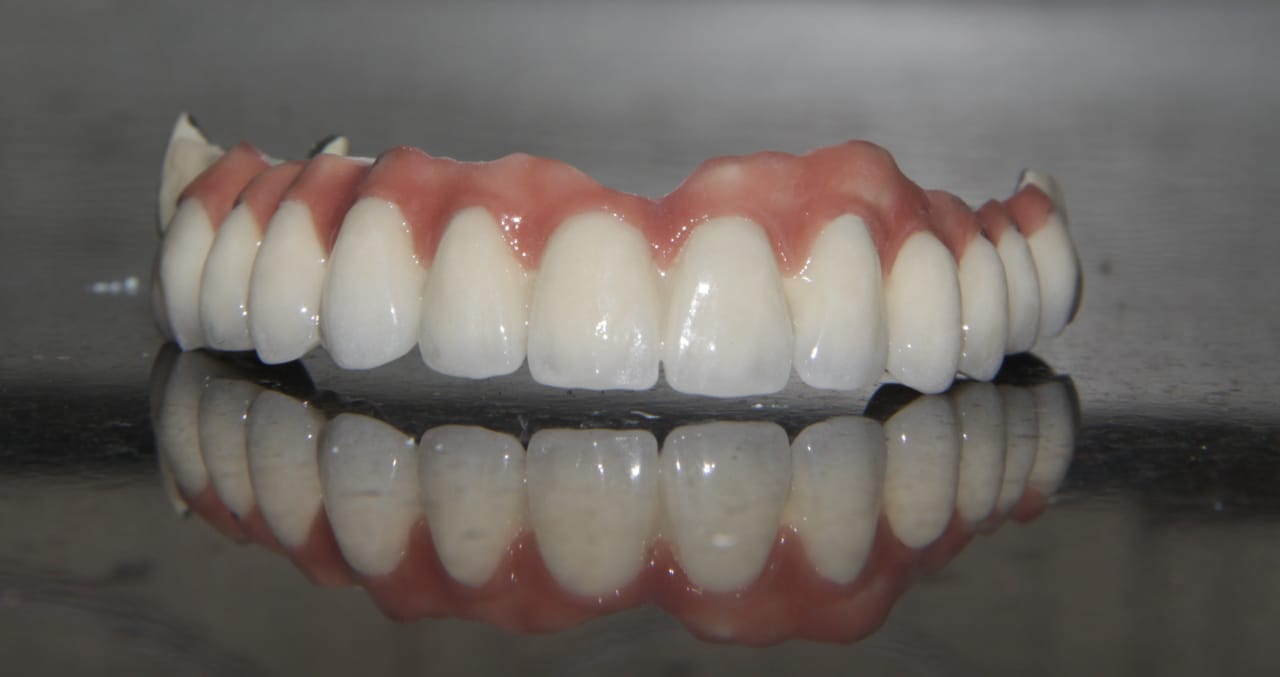Table of Content
Teeth that have dark stains may be better candidates for another lightening option, such as veneers, bonding, or crowns. Your dentist can discuss the options best suited for you. Yellowish teeth respond well to bleaching, brownish-colored teeth respond less well and grayish-hue or purple-stained teeth may not respond to bleaching at all. Just about anything with acids or tannins can dull your teeth.

Fluoride is a mineral that can prevent tooth decay from progressing. It can even reverse, or stop, early tooth decay. Tooth decay is the result of an infection with certain types of bacteria that use sugars in food to make acids. Over time, these acids can make a cavity in the tooth. Preparing a tooth for a crown usually requires two visits to the dentist -- the first step involves examining and preparing the tooth, the second visit involves placement of the permanent crown. Metals used in crowns include alloys that have a high content of gold or platinum, or base-metal alloys (for example, cobalt- chromium and nickel-chromium alloys).
Chipped crown
Resolved, that dentists comply with federal and state requirements, as appropriate, to administer the tests. This can occur from two consecutive EOLs, as often occur in text files, and this is sometimes used in text processing to separate paragraphs, e.g. in MediaWiki. Ultimately, it’ll likely boil down to your specific needs. Talk with your dentist about the best type of crown for you and your dental needs. For example, your tooth may be too weakened or worn down to support a regular filling, so veneer, if it’s a front tooth, or another type of treatment is recommended.
The process will depend on whether your dentist opts for a multi-day or same-day procedure. Dental insurance may cover all or part of the cost of your crown. However, your plan may only cover certain kinds of crowns. Check with your insurance company to get coverage details. According to the Cleveland Clinic, crowns can range in price from $800 to $1,500 — or even more — depending on the material used in the crown and the size of the tooth.
Cleaning & Janitorial Supplies
Tooth cavity filling at home could trap bacteria under the filling. Leaving a home-made filling there for years without professional attention could cause untold future problems. This is the type of kit that’d be handy when you travel, since most travel insurance only covers you for dental pain relief. If you lost a filling whilst overseas, you’d be on your own without a filling repair kit. A filling repair kit contains a putty-like material that you compress into the spot in question using the tool provided.
These acids begin to eat away at the tooth's enamel. Adapted with permission.On one team are dental plaque–sticky, colorless film of bacteria–plus foods and drinks that contain sugar or starch . Whenever we eat or drink something that contains sugar or starch, the bacteria use them to produce acids. These acids begin to eat away at the tooth's hard outer surface, or enamel. On average, dental crowns last between five and 15 years.
Dental Implants
Some kits come with a tray that can be molded to some degree. These are better than others that come with a standard mouthpiece. Brush teeth with a toothpaste made for sensitive teeth. These toothpastes contain potassium nitrate, which helps soothe the teeth's nerve endings.

If you smoke or drink lots of stain-causing beverages, you may need a touch up more often. Get a professional cleaning and mouth exam first, even if you decide to whiten your teeth at home. You might need only a thorough cleaning to restore your smile's sparkle. If you follow a product’s directions and get a good result, a once-a-month touch-up session is usually enough.
Vision Care Products
A dental veneer is a thin shell of tooth-colored porcelain or resin composite material that covers the whole front of the tooth with a thicker section to replace the broken part of the tooth. During the second visit, typically 2 to 3 weeks later, your dentist will remove the temporary crown and check the fit of the permanent one before permanently cementing it in place. Later, the dentist can cement the crown over the pin or post-retained restoration. Although the enamel that covers your teeth is the hardest, most mineralized tissue in the body, its strength has limits. Falling, receiving a blow to the face, or biting down on something hard -- particularly if a tooth already has some decay -- can cause a tooth to chip or break. If you discover you have broken or chipped a tooth, don't panic.
If you grind or clench your teeth at night, your dentist may recommend a night guard to protect your crown and surrounding teeth. Talk with your dentist about the types of crowns that are available and appropriate for your dental needs to help determine your dental costs. You may be a candidate for a crown if you’re missing a tooth, and the dentist needs to put in a dental bridge or a tooth implant.
With proper care , implants can last a lifetime. Implants provide a strong foundation for fixed or removable replacement teeth that are made to match your natural teeth. This damage is often called baby bottle tooth decay. Similar damage can occur when toddlers wander around drinking from a sippy cup filled with these beverages. Some dental offices have special digital milling technology that enables them to make a crown the same day without taking a putty impression. They may also have intra-oral scanners that create a digital impression that is sent to a lab in an electronic file.
Resolved, that adult coverage under Medicaid should not be left to the discretion of individual states but rather, should be provided consistent with all other basic health care services. Resolved, the American Dental Association recognizes that community-based topical fluoride programs are safe and efficacious in reducing dental caries. The Association encourages governmental, philanthropic and other entities to make funding available to communities seeking to initiate and/or maintain community water fluoridation. Collaborate with ADEA/dental schools to ensure dentists receive nutritional training that prepares them to discuss nutrition related issues with patients.
Sarah is an experienced writer and editor enthusiastic about helping readers live their healthiest and happiest lives. Before joining Forbes Health, Sarah worked as a writer for various digital publications including LendingTree, theSkimm, CNBC and Bankrate. When she isn’t writing or editing, you can find Sarah with her nose in a book or enjoying the outdoors with her French bulldog, Honey. Anne Russell is a professional writer with an extensive background in health and fitness journalism.

No comments:
Post a Comment